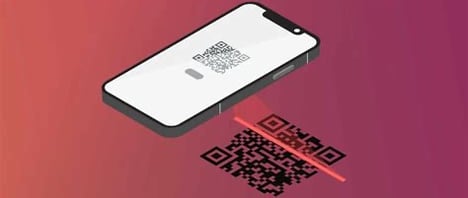Beware of QR Codes from Unverified Sources
Protect yourself from QR code scams with these tips. As QR codes become more popular, scammers are finding new ways to exploit them. Stay vigilant by verifying QR code legitimacy, avoiding random scans, and using reputable services


As QR codes continue to rise in popularity across various aspects of daily life, opportunistic scammers are leveraging their widespread use to deceive unsuspecting individuals. Originally developed in 1994, QR codes have become an integral part of the COVID-19 era, serving purposes ranging from displaying restaurant menus to facilitating contactless transactions and aiding in contact tracing efforts.
Nevertheless, the surge in QR code adoption has caught the eye of fraudsters who see these codes as potential tools for fraudulent activities. With the ability to store a significant amount of alphanumeric data and trigger diverse actions, QR codes offer ample opportunities for exploitation.
Fraudsters deploy a variety of tactics to pilfer money using QR codes:
1. Redirecting to malicious websites: Scammers distribute QR codes that steer users towards deceptive websites crafted to extract sensitive information. These fraudulent sites often mimic legitimate platforms and may solicit financial or personal data.
2. Downloading malicious files: QR codes encountered in establishments like bars and restaurants may prompt users to download nefarious files onto their devices. Attackers manipulate the codes to entice users into downloading harmful software or applications.
3. Triggering actions on devices: QR codes can prompt various actions on devices, including connecting to Wi-Fi networks or sending predetermined messages. While seemingly innocuous, these actions can compromise device security or facilitate unauthorized access.
4. Diverting payments: Fraudsters tamper with QR codes used for financial transactions, rerouting payments to their own accounts rather than the intended recipients. This deception can occur both in retail settings and through fraudulent payment requests initiated by scammers.
5. Stealing user identity: QR codes containing sensitive information, such as identification or medical records, are susceptible to theft. Scammers exploit these codes to pilfer personal data, potentially leading to identity theft or unauthorized access to applications.
6. SIM Swapping Data Collection: Since QR codes can be used to direct you receive and then forward your traffic, details about your device, OS, and browser could be collected and used as part of a SIM swap attack. The mobile industry is moving towards eSIM activations so QR codes could be used to the hackers advantage. This is why having a secure mobile service from EFANI is a priority - www.efani.com/kandicare($99 promo code)
To mitigate the risk of falling victim to QR code fraud, users should exercise caution:
Verify QR code legitimacy: Prior to scanning a QR code, ensure its authenticity and integrity by confirming its source and legitimacy.
Avoid scanning random codes: Refrain from scanning QR codes from unverified sources or unsolicited messages to mitigate the risk of falling prey to scams.
Exercise caution with financial transactions: When utilizing QR codes for financial transactions, verify recipient details meticulously and consider alternative payment methods for heightened security.
Disable automatic actions: Disable automatic actions when scanning QR codes to prevent unintended consequences, such as accessing malicious websites or downloading harmful files.
Verify URLs: After scanning a QR code, scrutinize the associated URL to authenticate its legitimacy before entering any personal information or login credentials.
Use reputable QR code services: When generating QR codes, opt for reputable services to ensure authenticity and shield against exploitation by fraudsters.
By adhering to these precautions, individuals can shield themselves from QR code scams and safeguard their financial and personal information effectively.

